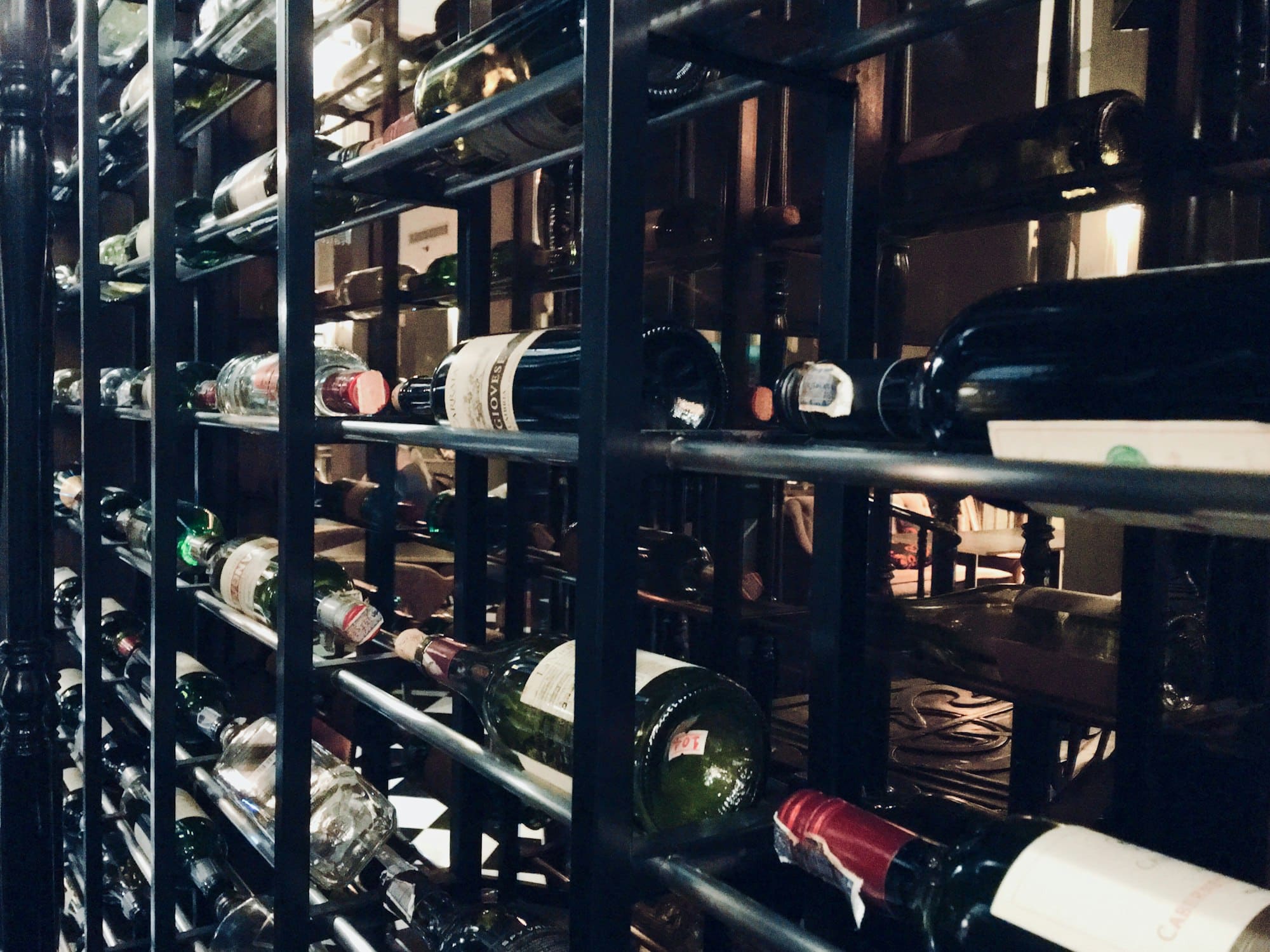How Can You Design a Home Wine Cellar for Optimal Temperature and Humidity Control?

For those of you who love wine, having a well-designed, climate-controlled wine cellar in your home is a must. It’s not just about having a space to store your precious wine collection. It’s about maintaining an environment that will allow each bottle of wine to age gracefully, reaching its full potential over time. This article focuses on the design aspects of a home wine cellar, particularly on how to control temperature and humidity, two crucial factors in wine storage.
The Importance of Temperature and Humidity in Wine Storage
Before delving into the specifics of wine cellar design, it is essential to understand why temperature and humidity are so crucial to wine preservation. The conditions under which you store your wines directly affect their taste, aroma, and overall quality.
Sujet a lire : How to Build a Space-Saving Fold-Down Desk in a Small Bedroom?
Temperature plays a key role in the ageing process of wine. Wines stored at too high a temperature will age faster, while those stored at too low a temperature may not mature properly at all. The ideal temperature for storing most types of wine is between 12 and 15 degrees Celsius (53-59 degrees Fahrenheit).
Humidity, on the other hand, helps to prevent the cork from drying out, which can allow air into the bottle and spoil the wine. The recommended humidity level for a wine cellar is between 60-70 percent.
Sujet a lire : How to Create a Living Room Centerpiece with a DIY Pallet Wood Coffee Table?
Designing for Temperature Control
So, how can you create a wine cellar that maintains the perfect temperature for your wines? This is where insulation and a cooling unit come into play.
Insulating your wine cellar is a critical step in maintaining a consistent temperature. Insulation creates a barrier that reduces the amount of heat transfer between the interior of the cellar and the outside environment. For effective temperature control, make sure to insulate all surfaces of the room, including the walls, ceiling, and floor.
The cooling unit, on the other hand, is responsible for maintaining the desired temperature within your cellar. There are various types of cooling units available, such as self-contained systems, ducted systems, and split systems. The type of cooling unit you choose will depend on the size of your cellar, your budget, and your specific needs.
These units do not only cool the air but also help dehumidify it. However, it’s important to remember that these systems must be correctly sized for your specific cellar. An underpowered unit will not cool efficiently, while an overpowered one can cool too quickly, not allowing the natural ageing process to occur.
Creating the Right Humidity Level
Now that we’ve discussed temperature control, let’s turn our attention to maintaining the right level of humidity in your wine cellar. As mentioned earlier, humidity is important to keep the corks in your wine bottles from drying out.
Adding a humidifier to your wine cellar is a practical way to maintain the right level of humidity. Similar to the cooling unit, the humidifier you choose will depend on the size of your cellar and your specific needs. It’s also advisable to use a hygrometer, a device that measures humidity, to monitor the moisture levels in your cellar.
However, bear in mind that while the right level of humidity is important, too much can lead to mold growth. Therefore, you need to strike a balance. A cooling system with a built-in dehumidifier can help to control humidity while keeping the temperature in check.
Considerations for Space and Design
Apart from temperature and humidity, the layout and design of your wine cellar are also important. The way you allocate space will have an impact on how efficiently you can store and access your wines.
Arrange your wine racks in such a way that allows for easy access to both your current selection and the bottles you intend to age. Consider using a variety of rack types to accommodate different bottle sizes and shapes.
The design of your cellar should not only be functional but also aesthetically pleasing. After all, a wine cellar can be a showpiece in your home, a place where you enjoy the fruits of your collection with friends and family. Choose lighting that highlights your bottles without producing too much heat, and consider adding a tasting area where you can savor your wines.
The Role of a Professional Wine Cellar Designer
While it’s certainly possible to design and build your own wine cellar, working with a professional wine cellar designer can be hugely beneficial. They have the knowledge and experience to help you navigate the many considerations involved in creating a space that is not only functional and beautiful but also perfectly suited to the needs of your specific wine collection.
A professional designer can help you select the right insulation, cooling system, and humidification system for your cellar. They can also assist with space planning and aesthetic design, ensuring that your wine cellar is a space you’ll love to spend time in, as well as a suitable storage space for your wines.
Creating a wine cellar in your home is a significant undertaking, but with careful planning and attention to temperature and humidity control, you can create the perfect environment for your wine collection. And remember, whether you’re a casual wine lover or a serious collector, the goal is to enjoy the process. After all, the world of wine is one to be savored.
Selecting the Appropriate Cooling Units and Systems
When it comes to home wine cellar design, choosing the correct cooling units and systems is paramount. A cooling system is primarily responsible for maintaining the desired temperature within your wine storage space. This is achieved through a constant cycle of cooling the air and dehumidifying it to prevent the wine from spoiling.
Cooling units for wine cellars come in various types, including self-contained, ducted, and split systems. To choose the right one, you’ll need to consider a few things. First, the size of your wine room is crucial. A cooling unit that’s too small won’t provide the necessary temperature and humidity control, while one that’s too large could cool too quickly, interfering with the wine’s natural aging process.
Your budget is another factor to consider when selecting a cooling unit. Custom wine cellar cooling systems, for instance, may offer superior performance but also come with a higher price tag. It’s important to find a balance between cost and quality to ensure that your wine collection is stored under optimal conditions.
Lastly, consider the specific needs of your wine cellars. Do you predominantly collect red, white, or sparkling wines? Each type has different temperature and humidity requirements, and your cellar cooling unit should be able to meet these needs.
Achieving Optimal Humidity Levels Through Efficient Design
Maintaining the ideal humidity level in your wine cellar is as important as controlling the temperature. Humidity is particularly important for keeping the corks in your wine bottles from drying out, which could allow air to enter the bottle and ruin the wine.
To ensure optimal humidity levels, you may need to install a humidifier in your wine cellar. The size of your cellar and your specific needs will determine the type of humidifier you choose. Additionally, using a hygrometer to monitor the moisture levels in your cellar is advisable.
However, it’s crucial to strike a balance. Too much humidity can foster mold growth which can damage both your wine and the cellar. To prevent this, consider choosing a cooling system with a built-in dehumidifier. This way, you can control both temperature and humidity simultaneously.
In addition, incorporating a vapor barrier into your cellar design will help maintain the right humidity levels. This barrier prevents moisture from coming in or going out of the cellar, promoting optimal humidity control.
Conclusion: Enjoying the Fruits of Your Labor
Building a wine cellar in your home is a significant project, requiring careful planning and attention to detail, particularly regarding temperature and humidity control. But the payoff is worth the effort, as you’ll have a perfect environment for your wine collection to age gracefully.
Whether you’re a casual wine lover or a serious collector, the goal is to enjoy the process. Selecting the right wine racks, designing an aesthetically pleasing space, controlling temperature and humidity correctly, all these contribute to creating a wine room that’s not just for storage, but also a place to savor and enjoy your wines.
Remember, working with a professional wine cellar designer can be hugely beneficial. They can guide you in choosing the right cooling units, insulation, and humidification systems. They can also help in layout planning and design aesthetics, ensuring that you’ll love spending time in your wine cellar.
So, take your time, plan carefully, and before you know it, you’ll be enjoying a glass of perfectly aged wine from your custom wine cellar. As every wine connoisseur knows, the world of wine is indeed one to be savored.
